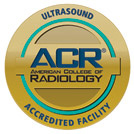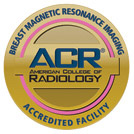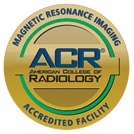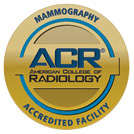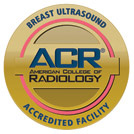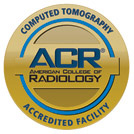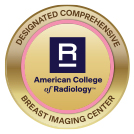Hysterosalpingography uses a type of X-ray technology called fluoroscopy to examine the uterus and fallopian tubes. In the instance a woman has experienced a miscarriage or other abnormalities preventing pregnancy, this procedure helps identify tumors, adhesions and uterine fibroids.
What is Hysterosalpingography?
Also called uterosalpingography, this procedure involves contrast material and fluoroscopy, which allows a radiologist to see movement within the body’s organs.
During this non-invasive procedure, the patient lies on a radiographic table so the uterus and fallopian tubes can be filled with contrast material. Meanwhile, an X-ray machine and detector will take images and convert them into video, both of which will display on a monitor. Fluoroscopy helps guide the X-ray tubes and observe the area.
Unlike traditional X-ray technology, fluoroscopy uses a continuous or pulsed beam to capture a series of images. Contrast material helps highlight and define the areas being examined. Fluoroscopy helps examine joints and internal organs, producing stills or video files which are electronically stored.
This technology offers a few more benefits to patients:
- Hysterosalpingography has few complications.
- It’s a non-invasive way to identify abnormalities related to infertility or carrying a fetus to term.
- It has been known to help open blocked fallopian tubes, allowing a patient to become pregnant at a later date.
The procedure does have a few limitations. For one, imaging can only capture the inside of the uterus and fallopian tubes. An ultrasound or MRI is a more accurate option for abnormalities on the walls of the uterus or in the ovaries. The procedure also cannot identify all infertility problems, such as why a fertilized egg will not implant.
Who Should Have This Procedure?
Generally, a doctor recommends this procedure to examine the shape and structure of a woman’s uterus if she’s having trouble getting pregnant or has experienced multiple miscarriages. The scan will further examine other related factors, including how far the fallopian tubes are open and if any scarring exists inside the uterine or peritoneal cavity.
In the event a woman’s had multiple miscarriages, a doctor may want to investigate the presence of abnormalities within the uterus and fallopian tubes. Whether congenital or acquired, these include:
- Tumors
- Uterine fibroids
- Adhesions
A doctor may also suggest hysterosalpingography as a follow-up to tubal surgery to identify:
- Infection or scarring blocking the fallopian tubes
- Tubal ligation
- How well the fallopian tubes have stayed closed following sterilization
- The results of reverse sterilization
- Opening the fallopian tubes following blockage due to disease
Hysterosalpingography is not recommended if a patient has a pelvic infection or sexually transmitted disease (STD).
Preparation
Hysterosalpingography is typically done in an outpatient setting. Prior to the procedure, patients should tell the technologist if they may be pregnant, as the procedure could potentially expose a developing baby to radiation. We should also be informed of:
- Any recent illnesses and medications, especially if you have an active inflammatory condition, such as an STD or chronic pelvic infection.
- All medications you currently take.
- Menstruation cycle. Results are optimal at least one week following a period and before ovulation.
- Any allergies, including to the contrast material.
You may be prescribed an antibiotic to take before or after the procedure by your OB-GYN. A sedative may be given to reduce any discomfort.
On the day of the procedure:
- Metal objects, such as jewelry and umbilical piercings should be taken off, as they can interfere with imaging quality.
- A patient lays on her back on the exam table with her feet in stirrups and knees bent. A speculum may be used to cleanse the cervix and your OB-GYN will insert a catheter to inject the contrast material.
- When the contrast material starts to flow, the patient may feel some irritation in the abdominal cavity or peritoneum and some lower back pain. The speculum is then removed.
- As the contrast material fills the uterus, peritoneal cavity and fallopian tubes, the patient is moved below the fluoroscopy camera to begin taking images.
- In the event the scan detects a potential abnormality, the radiologist may ask the patient to stay and take a set of delayed images with less contrast dye. Another set of images may also be taken the next day, to ensure scar tissue is not present in the ovaries.
- Once all imaging is complete, your OB-GYN removes the catheter.
After the scan, patients can expect some spotting over the next few days. The radiologist will review the images with your doctor, who may request a follow-up scan to address any abnormalities.
Has your doctor recommended a hysterosalpingography? Contact us to make an appointment today!





